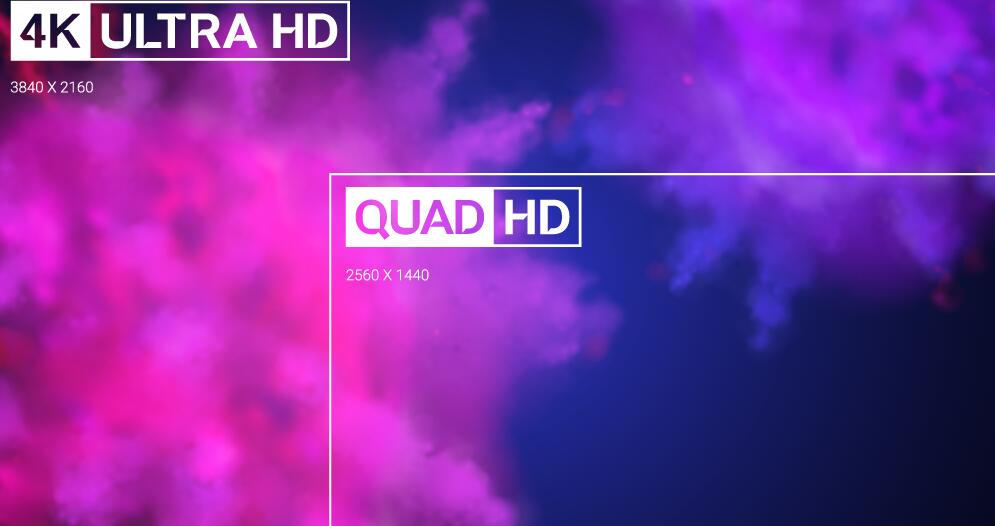
When it comes to buying a new monitor, figuring out which resolution is best for your system can be difficult. There are very specific resolutions, and then there are generic marketing terms such as 2K, 4K, and whatnot.
To further complicate things, there’s the “Ps” such as 720P, 1080P, 1440P, and others. And then there are the terms like Full HD, Quad HD, and Ultra HD. It can all be very overwhelming for the average consumer. Where do you start?
I was struggling with the same issue, so I did some research, and I thought I would help clear up some of the misconceptions about display resolutions in this article.
Is 1440P 2K Resolution?
1440P or 2560×1440 is 2K. It’s referred to as 2K because it has twice as many vertical pixels as standard 720P HD, the width is in the 2,000-pixel range, and it’s an easy term to use.
4K is usually used to describe displays that support resolutions with a 4,000 pixel width. In the movie industry, 4K displays use a 4096×2160 (also called DCI 4K) resolution (What’s 4K? 3840×2160?). However, the most common resolution for 4K displays is 3840×2160 which is not in the 4,000 wide pixel range.
As you can see, there’s no real set-in-stone rule for these terms, and they were mainly coined for marketing purposes. It’s an easier way to advertise displays. The “K” term is relatively new and borrowed from the cinema industry. Interestingly enough, there is no “3K” resolution.
Most displays can support a wide range of resolutions, in various aspect ratios, which would be overly complicated to market. So that’s one reason terms like 2K, 1440P, and whatnot, became mainstream, and they more or less, represent a range of possible resolutions, or a maximum resolution.
Which Resolution Should You Choose? 2K or 4K
As we’ve attempted to outline in this article, your decision between 2K or 4K (as well as any other resolution) is heavily dependent on the application and viewing distance.
If you plan to buy a 4K monitor for your computer (assume a 2-3 ft viewing distance 27 inches), the 4K monitor will always be better than 2k. The same could be said for larger displays at shorter viewing distances.
However, as you increase the viewing distance, the perceivable benefit of 4K drops off markedly.
What is the difference between 2K and 1080P?
Have you ever wondered what the difference is between 2K and 1080p resolution? We will explain all the differences and more in our latest blog post.
1080p (also referred to as “Full HD” or “FHD”) is currently the video broadcasting standard in North America and Europe. A 1080p native resolution is 1920 pixels horizontally and 1080 pixels down vertically.
720p and 1080p are referred to by their number of vertical pixels. However, once you get to 1440p and above they are commonly referred to by their pixels horizontally.
2K (also referred to as “1440p”, “Quad HD”, or “QHD”) is quite the upgrade to 1080p. A 2K native resolution is 2560 pixels horizontally and 1440 pixels vertically. It is referred to as QHD because it has 4 times the pixels as 720p. These added pixels allow for a more detailed recording. When you zoom in on a 2K video, it will retain more clarity compared to a 1080p video. Most digital projectors used in theaters are 2k resolution. Hence why it is referred to as cinema resolution. This allows cinemas to use bigger pictures without losing any detail.
Even if you don’t have a 2K monitor to watch the videos in its native resolution, it will still look better than 1080p. Shooting in 2K allows you to crop your videos without the loss of HD resolution. As a result, you are able to digitally zoom and pan, as well as increase the sharpness and image color, without losing any video quality.
This is all wrong!
2k is 2048x1080p It is NOT QHD/1440p